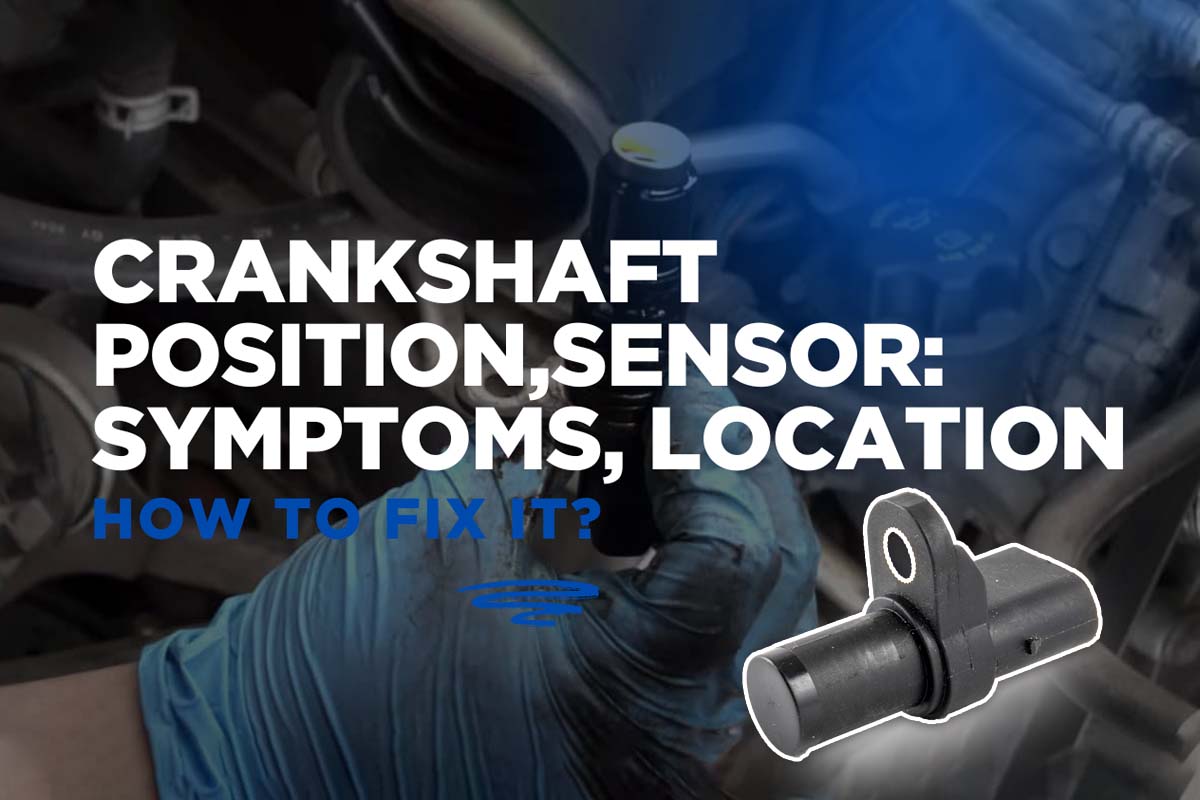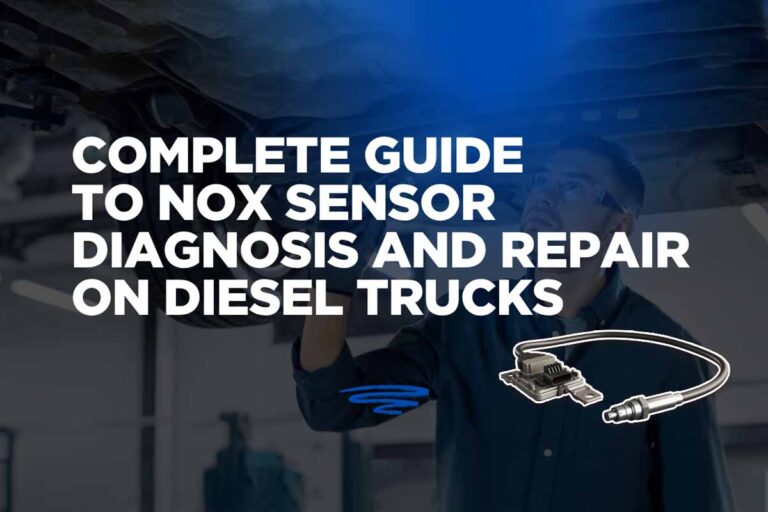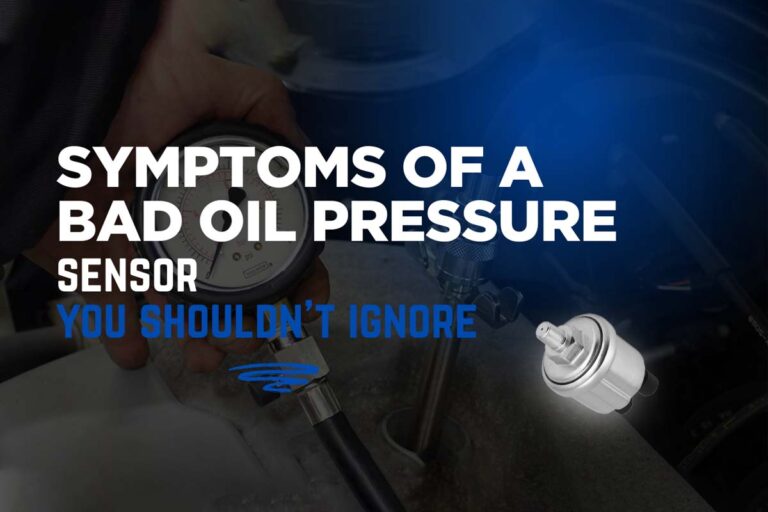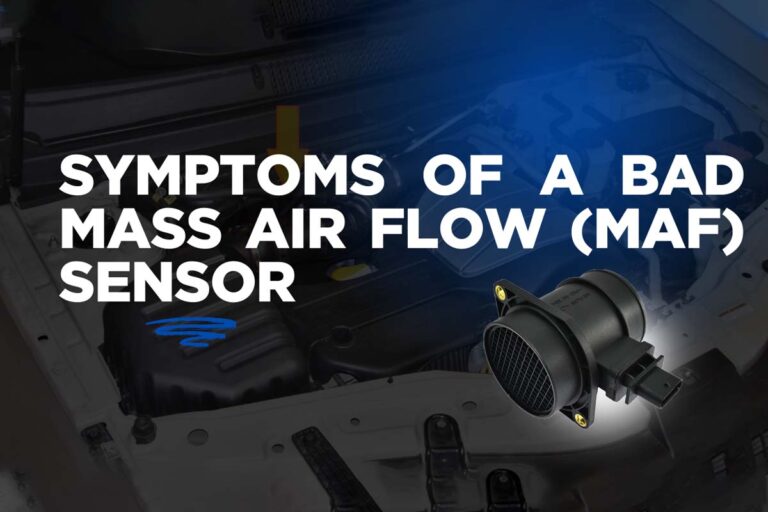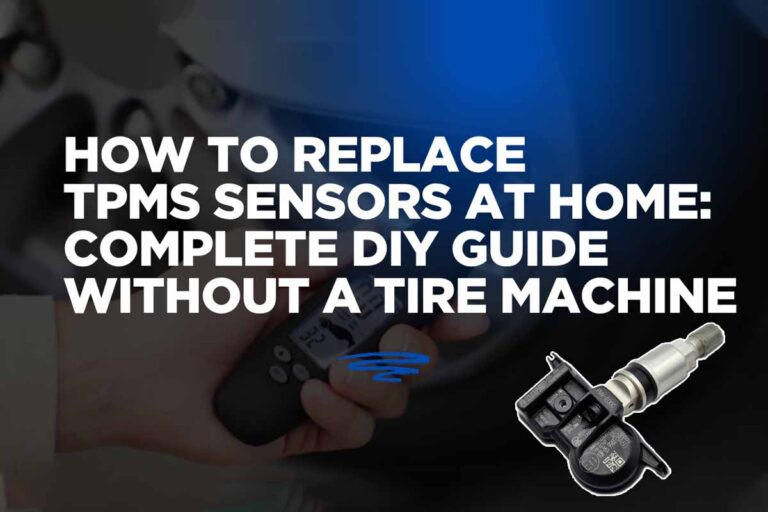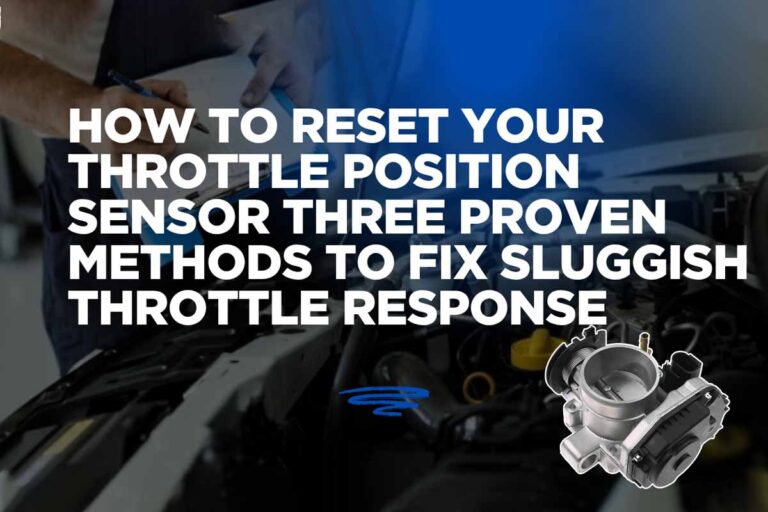Crankshaft Position Sensor: Symptoms, Location, and How to Fix It
The crankshaft position sensor plays an essential role in the engine management system of modern vehicles. It monitors the rotational speed and position of the crankshaft, transmitting this crucial data to the engine control unit (ECU). The ECU then uses this information to adjust ignition timing and fuel injection, ensuring the engine performs optimally, whether you're aiming for fuel efficiency or powerful acceleration. However, when this sensor starts to fail, it can lead to serious performance issues. In this article, we’ll discuss the common symptoms, the sensor's location, how to test and reset it, and what to do when it's time for a replacement.
What Does the Crankshaft Position Sensor Do?
The primary job of the crankshaft position sensor is to provide real-time data about the crankshaft’s position to the ECU. This data is vital because the ECU uses it to adjust important engine parameters, like fuel injection timing and ignition. The sensor’s role is crucial in controlling engine performance, particularly in ensuring the combustion process happens at the correct time. This allows your vehicle to operate efficiently, whether you’re driving in a fuel-conscious manner or need that quick burst of power during acceleration.
Symptoms of a Bad Crankshaft Position Sensor
A malfunctioning crankshaft position sensor can affect your vehicle in several ways. The symptoms of a bad sensor can be subtle or severe, and they often appear unpredictably, making it difficult to pinpoint the issue. Some common symptoms to watch for include:
- Check Engine Light: A faulty crankshaft position sensor often triggers the Check Engine Light. Codes like P0335 or P0336 related to the crank sensor will appear in your vehicle’s diagnostic system.
- Engine Misfire: The sensor’s failure can lead to misfires, causing the engine to run roughly, jerk, or vibrate. This happens because the ECU receives incorrect timing information for fuel injection and spark.
- Difficulty Starting: One of the most obvious signs of a failing sensor is trouble starting the engine. If the sensor is not sending the correct signal to the ECU, the engine may struggle to start, or it may not start at all.
- Intermittent Stalling: A bad crankshaft position sensor can cause your engine to stall unpredictably, particularly at idle or while driving. This can be especially dangerous when driving at high speeds.
- Poor Acceleration: If your vehicle has a delayed or unresponsive acceleration, it could be due to a failing sensor. This happens because the ECU is unable to deliver the proper amount of fuel and ignition timing.
- Rough Idling: When the sensor malfunctions, it can cause your engine to idle unevenly. This leads to vibrations or a shaking engine, especially when the vehicle is stationary.
- Decreased Fuel Efficiency: If your vehicle’s fuel injection timing is thrown off by the sensor, you may notice a significant drop in mileage and an increase in fuel consumption.
- Failure in Emissions Test: A faulty crankshaft position sensor can lead to increased emissions due to poor combustion timing, resulting in a failed emissions test.
These symptoms can appear intermittently, making it harder to diagnose the exact issue. If you experience multiple of these signs, it’s crucial to investigate the sensor further.
Crankshaft Position Sensor Location
The crankshaft position sensor location depends on the vehicle make and model, but it’s generally situated near the crankshaft pulley or timing cover. In front-wheel-drive vehicles, it’s commonly found near the front of the engine, close to the timing belt or timing chain. For rear-wheel-drive vehicles, the sensor is often located at the rear of the engine near the transmission bell housing.
If you’re unsure of the exact location, consult your vehicle’s manual or look for online resources specific to your car. This will help you locate the sensor and decide whether you can perform the repairs yourself.
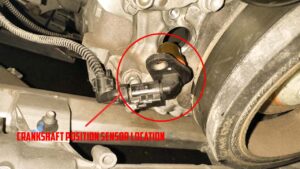
How to Test a Crankshaft Position Sensor
Before replacing the crankshaft position sensor, you should test it to confirm that it is the actual cause of the symptoms. Here’s how you can do that:
- Use an OBD2 Scanner: The first step is to connect an OBD2 scanner to your vehicle’s diagnostic port. If the Check Engine Light is on, the scanner will pull up trouble codes related to the crankshaft position sensor, such as P0335 or P0336. These codes can help identify the problem and confirm that the sensor is faulty.
- Check Sensor Voltage: Use a multimeter to test the voltage output from the sensor. Have a helper crank the engine while you check the sensor’s resistance or voltage. The reading should fluctuate from zero to five volts rapidly as the engine cranks.
- Visual Inspection: Look for obvious signs of damage, such as dirt, oil buildup, or corrosion around the sensor. In some cases, the issue may not be with the sensor itself but with a dirty or faulty connector.
If the sensor passes these tests but you’re still experiencing symptoms, it could indicate an issue with the wiring or the ECU itself.
How to Reset Crankshaft Position Sensor
If you’ve replaced the crankshaft position sensor, you may need to reset the system. Here’s how:
- Reinstall the Battery: Reconnect the battery and start the engine.
- Let the Engine Idle: Allow the engine to idle for 15-20 minutes to give the ECU time to relearn the position of the crankshaft.
- Clear Error Codes: Use an OBD2 scanner to clear any stored trouble codes related to the crankshaft sensor. This step ensures that the system is ready for normal operation.
In some cases, you may need to follow specific relearn procedures outlined in your vehicle’s service manual, which could require a professional diagnostic tool.
How to Replace Crankshaft Position Sensor
Replacing a crankshaft position sensor isn’t a difficult task if you have the right tools and experience. Here’s a step-by-step guide:
- Disconnect the Battery: Always disconnect the vehicle’s battery before working on electrical components.
- Locate the Sensor: Refer to your vehicle’s manual to find the exact location of the crankshaft position sensor.
- Remove Obstructions: In some cases, you may need to remove components like the air filter housing or the throttle body to access the sensor.
- Remove the Sensor: Unbolt and carefully remove the old sensor. Disconnect the electrical connector and set the sensor aside.
- Install the New Sensor: Install the new sensor in the same position, ensuring it’s securely bolted in place and the connector is properly attached.
- Reconnect the Battery: Once the new sensor is installed, reconnect the battery and start the engine to ensure everything is working as it should.
Most crankshaft position sensors are affordable, typically costing between $40 and $150, depending on the make and model of your vehicle.
Seek Professional Help or DIY?
If you’re unsure about the symptoms or the replacement process, it’s best to consult a professional mechanic. Improper installation or failure to diagnose the root cause can lead to further engine problems. However, if you are a DIY enthusiast with basic tools and experience, replacing the crankshaft position sensor is a straightforward task that you can do yourself.
Conclusion
A failing crankshaft position sensor can lead to a range of frustrating and potentially dangerous issues with your vehicle. Recognizing the symptoms early and diagnosing the issue accurately can save you time and money. Whether you’re testing, resetting, or replacing the sensor, understanding how it works and what to look for will keep your engine running smoothly.
By following this guide, you can maintain your vehicle’s performance and avoid costly repairs in the future. If you’re experiencing issues with your crankshaft position sensor, don’t ignore them—acting quickly can prevent further damage to your engine.
